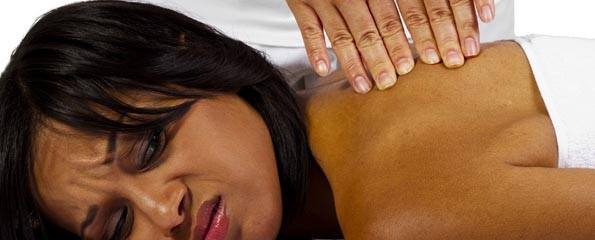Hands-on treatment improves chronic low back pain
The numbers are staggering. More than 632 million people worldwide suffer from low back pain, and it is a leading cause of disability. According to the Institute of Medicine, one-third of all Americans suffer from chronic pain, which exceeds the number of people who are affected by heart disease, diabetes and cancer combined.
In the U.S., approximately 100 million adults are affected by chronic pain, and the economic costs of medical care and lost productivity total more than $550 billion annually.
“Chronic low back pain is an important component of these costs,” said John Licciardone, DO, Executive Director of The Osteopathic Research Centre at the UNT Health Science Centre in Fort Worth (UNTHSC) and author of a study published in the Annals of Family Medicine. “Our research offers hope in the form of a hands-on treatment that provides moderate to substantial improvement in pain, and that reduces the use of prescription medication.”
This study, conducted at UNTHSC used osteopathic manual treatment (OMT) and ultrasound therapy to treat chronic low back pain in 455 adults. Patients in the study who received ultrasound therapy did not see any improvement, but the patients who received OMT saw significant improvement in pain, used less prescription medication and were more satisfied with their care over the 12 weeks of the study than those patients who did not receive OMT.
In study patients who received OMT, nearly two-thirds had a 30-percent reduction in their pain level, and half had a 50-percent reduction in their pain level. Patients received six treatments during the course of the study.
“One of the great benefits of OMT is that it has few side effects compared with other common treatments for low back pain that often involve serious side effects,” Licciardone said. “In our study, patients who had higher levels of pain saw even greater reductions in pain. Not only does OMT reduce pain, it seems to work even better in people who experience higher pain levels. These are the people who are often treated with potentially addictive drugs such as OxyContin and Vicodin, epidural steroid injections or surgery.
If we can reduce the use of these drugs and invasive procedures by helping people to feel better with hands on treatment that has few side effects, that is a plus for our patients and contributes to the management of chronic pain.”
(Source: UNT Health Science Centre: Annals of Family Medicine)
More information
 | For more information on chronic pain, including different types of chronic pain, living with chronic pain and treatments for managing chronic pain, see Chronic Pain. |
Dates
Tags
Created by:

 Login
Login














